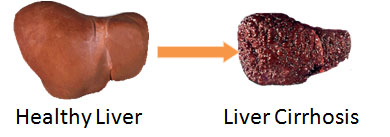Liz Highleyman
Produced in collaboration with hivandhepatitis.com
Published: 11 August 2015
More than one-quarter of people with chronic hepatitis C at Kaiser-Permanente developed liver cirrhosis over 12 years and 40% of these experienced decompensation – higher rates than expected, according to a presentation at the recent Digestive Disease Week 2015 meeting in Washington, DC. The study also found that cirrhosis and decompensation were associated with comorbid conditions, supporting the idea of hepatitis C as a systemic disease.
Over years or decades, chronic hepatitis C virus (HCV) infection can lead to serious liver disease including advanced fibrosis, cirrhosis, liver cancer, decompensated liver failure and the need for a liver transplant. People with decompensation – which occurs when the liver can no longer carry out its vital functions – may develop ascites (abdominal fluid accumulation), bleeding varices (enlarged veins) in the esophagus or stomach and hepatic encephalopathy (brain impairment).
Lisa Nyberg and colleagues analyzed outcomes among people with hepatitis C who received care through Kaiser Permanente Southern California, a large, integrated health maintenance organization with approximately 3.5 million members, between January 2002 and December 2013.
The projected public health burden of hepatitis C is based on old natural history studies that may not reflect the current patient population, the researchers noted as background. Hepatitis C is most common among ‘baby boomers’ born during 1945-1965. Compared with these earlier studies, the current cohort of people with hepatitis C is older and has a higher prevalence of obesity and other comorbid conditions that may affect the natural history of the disease.
This retrospective analysis included 54,383 people with a relevant diagnosis code or a positive HCV RNA lab test. Those who had liver cancer or had already had a liver transplant were excluded. Of these, 24,968 adults with HCV had been Kaiser-Permanente members for at least a year and met the inclusion criteria. About 60% were men, more than 40% were white, more than a quarter were Hispanic and the mean age was approximately 53 years.
READ THE REST OF THE ARTICLE HERE AT AIDSMAP
